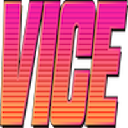-
 Bitcoin
Bitcoin $83,761.5162
-0.79% -
 Ethereum
Ethereum $1,560.7768
-3.36% -
 Tether USDt
Tether USDt $0.9999
0.00% -
 XRP
XRP $2.0759
-1.95% -
 BNB
BNB $581.4168
-0.36% -
 Solana
Solana $127.0879
-0.76% -
 USDC
USDC $0.9999
-0.01% -
 TRON
TRON $0.2514
0.39% -
 Dogecoin
Dogecoin $0.1530
-1.63% -
 Cardano
Cardano $0.6047
-2.55% -
 UNUS SED LEO
UNUS SED LEO $9.4090
0.50% -
 Chainlink
Chainlink $12.1339
-1.88% -
 Avalanche
Avalanche $18.7533
-3.95% -
 Stellar
Stellar $0.2341
-1.77% -
 Toncoin
Toncoin $2.8633
-2.76% -
 Shiba Inu
Shiba Inu $0.0...01164
-1.57% -
 Sui
Sui $2.0688
-2.49% -
 Hedera
Hedera $0.1558
-2.40% -
 Bitcoin Cash
Bitcoin Cash $317.7189
-2.09% -
 Litecoin
Litecoin $74.4413
-1.09% -
 Polkadot
Polkadot $3.5267
-1.73% -
 Dai
Dai $1.0001
0.01% -
 Hyperliquid
Hyperliquid $15.5553
1.26% -
 Bitget Token
Bitget Token $4.3098
0.23% -
 Ethena USDe
Ethena USDe $0.9993
0.02% -
 Pi
Pi $0.5992
-10.38% -
 Monero
Monero $216.3755
0.29% -
 Uniswap
Uniswap $5.0904
-3.03% -
 OKB
OKB $51.4466
0.63% -
 Pepe
Pepe $0.0...07118
1.06%
What are Binance's transaction fees?
Binance's complex fee structure depends on factors like trading volume, pair, trading type (spot, margin, futures), and VIP level, with maker/taker fees and BNB discounts influencing the final cost.
Feb 28, 2025 at 11:31 am
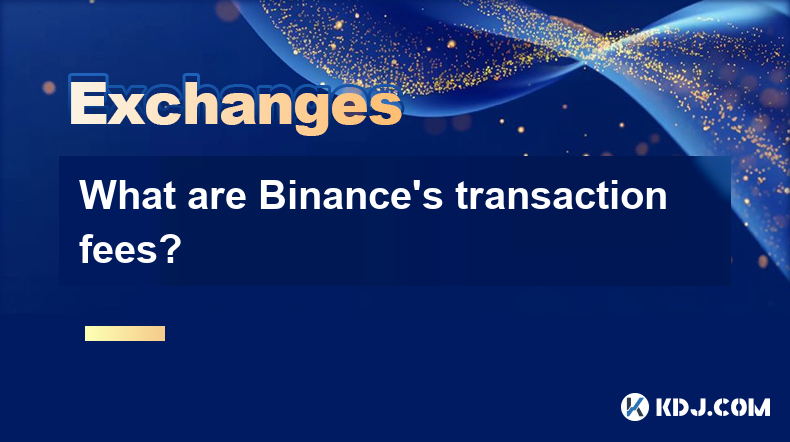
What are Binance's Transaction Fees? A Deep Dive into Binance's Fee Structure
Key Points:
- Binance's fee structure is complex, varying based on several factors including trading volume, trading pair, whether you're using spot, margin, or futures trading, and your VIP level.
- Maker and taker fees are the core components, with makers generally receiving discounts.
- Binance offers various discounts and rebates, impacting the final transaction cost.
- Understanding the fee structure is crucial for maximizing profitability when trading on Binance.
- Several alternative fee structures exist, like the BNB discount, influencing the overall cost.
Understanding Binance's Transaction Fees: A Detailed Breakdown
Binance, one of the world's largest cryptocurrency exchanges, employs a multi-layered fee structure. Understanding this structure is critical for optimizing your trading strategy and minimizing costs. Let's explore the various aspects that influence Binance's transaction fees.
- Maker and Taker Fees: At the heart of Binance's fee structure lies the distinction between maker and taker orders. Maker orders add liquidity to the order book by placing limit orders that are not immediately filled. Taker orders, on the other hand, remove liquidity by filling existing limit orders. Binance generally charges lower fees for maker orders and higher fees for taker orders. This incentivizes users to contribute to the liquidity of the exchange. The specific maker and taker fees vary depending on your trading volume over a 30-day period and your VIP level, which is determined by your 30-day trading volume (in BNB). A higher trading volume generally results in lower fees. The exact percentages are dynamically updated on Binance's website, reflecting the ever-changing market conditions and the exchange's competitive landscape. The fees are typically expressed as a percentage of the transaction value, meaning that larger trades will incur higher absolute fees even if the percentage remains the same. Furthermore, the fees can differ significantly depending on the specific trading pair. Pairs involving less liquid cryptocurrencies often have higher fees to compensate for the increased risk and difficulty in matching orders. The intricacies of this fee structure require careful attention, as a misunderstanding can significantly affect your profitability, especially for high-frequency traders or those executing large trades. For instance, a high-frequency trader executing thousands of trades daily needs to meticulously track and optimize their maker/taker ratios to minimize overall transaction costs. This often involves sophisticated algorithms and strategies to ensure optimal fee efficiency. Failing to understand this dynamic could lead to substantial losses over time, especially when trading volatile assets.
- VIP Levels and Discounts: Binance's VIP system offers tiered discounts based on your 30-day trading volume. Higher trading volumes unlock progressively lower fees. Achieving a higher VIP level not only reduces your maker and taker fees but also grants access to other benefits, such as preferential customer support and potentially exclusive trading opportunities. The specific discounts offered at each VIP level are clearly outlined on Binance's website and are subject to change. The VIP system encourages active trading and rewards high-volume traders with significant fee reductions, making it a compelling incentive for those who frequently trade on the platform. However, it's crucial to remember that achieving a higher VIP level requires substantial trading activity, which carries its own inherent risks. The pursuit of lower fees should not overshadow the importance of responsible risk management and sound trading strategies. A trader should always prioritize a well-defined trading plan over simply aiming for a higher VIP level, regardless of the associated fee benefits.
- BNB Discounts: Binance's native token, BNB, offers a significant discount on trading fees. Holding and using BNB to pay for your trading fees can significantly reduce your overall costs. The discount percentage varies depending on your VIP level and the amount of BNB you hold. The BNB discount further complicates the already intricate fee structure, adding another layer of optimization for users seeking to minimize their trading expenses. The decision to utilize the BNB discount requires careful consideration of the opportunity cost of holding BNB versus investing in other cryptocurrencies. The potential savings from the BNB discount need to be weighed against the potential gains from holding other assets. This strategic decision should align with the overall investment portfolio and risk tolerance of the user. Furthermore, fluctuations in the price of BNB can impact the effectiveness of this discount strategy. A sharp decline in the price of BNB might negate the benefits of the fee reduction, highlighting the importance of considering market conditions when making this decision.
- Spot, Margin, and Futures Trading Fees: Binance offers various trading options, each with its own fee structure. Spot trading, the most straightforward method, involves the immediate exchange of cryptocurrencies. Margin trading, which involves borrowing funds to amplify trading positions, typically carries higher fees due to the increased risk involved. Futures trading, involving contracts to buy or sell cryptocurrencies at a future date, also has a distinct fee structure. These fees can be significantly higher than spot trading fees, as they incorporate funding rates and other factors specific to futures contracts. Understanding the nuances of each fee structure is crucial for making informed decisions about your trading strategy. For instance, while margin trading offers the potential for higher profits, it also comes with the risk of substantial losses due to the leveraged nature of the positions. Similarly, futures trading involves sophisticated strategies and risk management techniques that require a thorough understanding of the market dynamics and the specific terms of the contracts. A user needs to thoroughly understand the intricacies of each trading type and its associated fees before engaging in them. Ignoring these differences can lead to significant losses, especially for inexperienced traders.
- Withdrawal Fees: In addition to trading fees, Binance charges withdrawal fees for transferring cryptocurrencies off the platform. These fees vary depending on the specific cryptocurrency being withdrawn and the network used for the transaction. The withdrawal fees are often dependent on the network congestion, with higher fees during periods of high transaction volume. Understanding these fees is essential for budgeting and planning your withdrawals effectively. The fees are typically displayed in the cryptocurrency being withdrawn and are usually subject to change. It's essential to check the current withdrawal fees before initiating a transaction to avoid any surprises. Unexpectedly high withdrawal fees can significantly reduce the overall profitability of a trade, especially when dealing with smaller amounts of cryptocurrency.
- Other Fees: Binance may introduce other fees periodically, such as inactivity fees or fees for specific services. It's crucial to stay updated on Binance's fee schedule to avoid any unexpected charges. Staying informed about these fees requires regular monitoring of Binance's official website and announcements. Changes to the fee structure are usually announced in advance, providing users with ample time to adjust their trading strategies accordingly. Ignoring these updates can lead to financial losses and frustration.
FAQs:
Q: How do I calculate my exact Binance transaction fee before placing an order?
A: Binance's website provides a fee calculator which, when you input your order details (amount, trading pair, etc.), estimates the fee. However, the final fee might slightly vary due to market fluctuations and the dynamic nature of the fee structure.
Q: Can I reduce Binance transaction fees beyond using BNB?
A: Achieving higher VIP levels through increased trading volume is the primary method beyond BNB to lower fees.
Q: Are Binance's fees competitive compared to other exchanges?
A: Binance's fees are generally considered competitive, particularly for high-volume traders who benefit from VIP discounts and the BNB discount. However, other exchanges may offer different fee structures that might be more advantageous depending on individual trading patterns.
Q: What happens if I don't have enough BNB to cover the BNB discount?
A: You will be charged the standard maker/taker fee without the BNB discount.
Q: Are there any hidden fees on Binance?
A: Binance is generally transparent about its fees, but it's essential to read the terms and conditions carefully and keep an eye on any announcements regarding changes to the fee structure. Hidden fees are rare but always a possibility with any platform.
Q: How often does Binance update its fee structure?
A: Binance's fee structure is subject to change, and it's advisable to regularly check the official website for the latest information.
Q: Where can I find the most up-to-date information on Binance's fees?
A: The most accurate and current information on Binance's fees is available on the official Binance website, within the help center, and in their official announcements. Third-party sources may not always be entirely up to date.
Disclaimer:info@kdj.com
The information provided is not trading advice. kdj.com does not assume any responsibility for any investments made based on the information provided in this article. Cryptocurrencies are highly volatile and it is highly recommended that you invest with caution after thorough research!
If you believe that the content used on this website infringes your copyright, please contact us immediately (info@kdj.com) and we will delete it promptly.
- VeChain (VET) Has Secured the Coveted MiCAR License, Opening Up Operations Across Europe
- 2025-04-17 02:35:13
- Ethereum (ETH) Derivative Markets See Another Big Accumulation Ahead of the Expected Volatility
- 2025-04-17 02:35:13
- Chainlink (LINK) Emerges as the Most Valuable Blockchain Infrastructure Project, Reaching $12.7B FDV
- 2025-04-17 02:30:13
- Is Bittensor (TAO) Worth a $1,000 Bet Right Now? Here's What the Chart Says
- 2025-04-17 02:30:13
- Bitcoin (BTC) Price Slides 23% From Its January All-Time High
- 2025-04-17 02:25:13
- Bitcoin (BTC) Price Hasn't Cleared Volatility, as Gold Soars to Another ATH
- 2025-04-17 02:25:13
Related knowledge

How do I contact customer service on Binance to resolve issues?
Mar 16,2025 at 04:30am
Key Points:Binance's customer service is primarily self-service, relying heavily on its help center and FAQs.Direct contact methods are limited, with email support being the most common route for non-urgent issues.Urgent issues may require using the in-app support system, though response times can vary.Understanding Binance's support structure and utili...
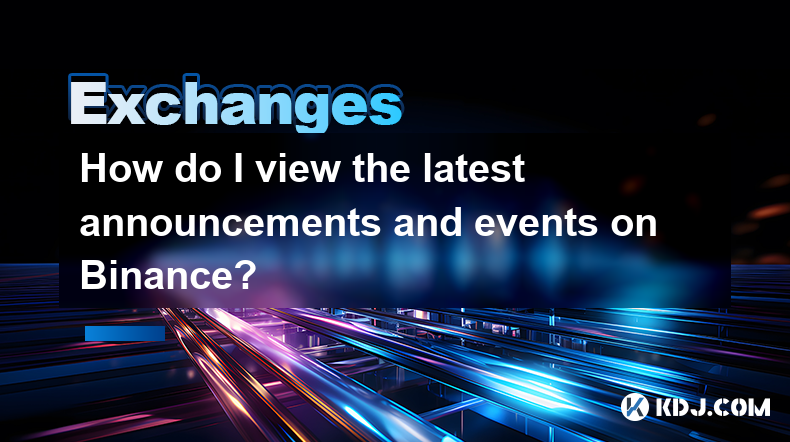
How do I view the latest announcements and events on Binance?
Mar 18,2025 at 10:18pm
Key Points:Binance utilizes multiple channels for disseminating announcements and events.The official Binance website is the primary source.Binance's social media platforms offer timely updates.Email subscriptions keep users informed about relevant announcements.Third-party aggregators can supplement official channels but require caution.How Do I View t...

How do I set up a subaccount on Binance?
Mar 14,2025 at 01:50pm
Key Points:Binance does not offer traditional "subaccounts" in the sense of separate accounts with independent logins under a master account.Instead, Binance offers features like user-defined labels for better portfolio management and API keys for automated trading. These provide functionality similar to subaccounts.Setting up these features involves na...
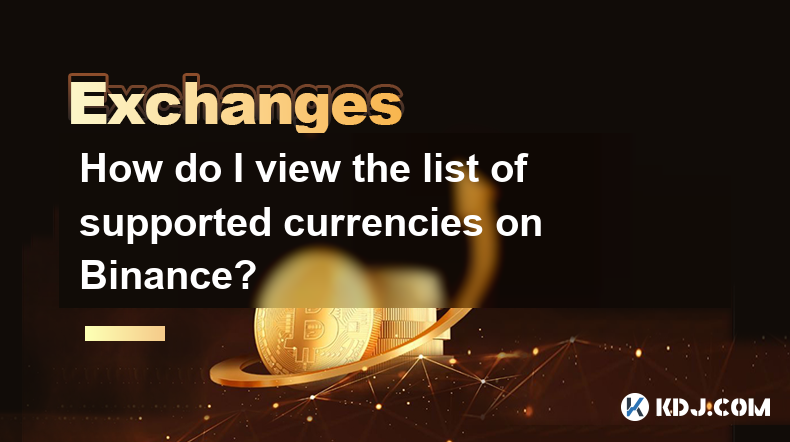
How do I view the list of supported currencies on Binance?
Mar 15,2025 at 05:35am
Key Points:Binance supports a vast and frequently updated list of cryptocurrencies. There's no single, static list.Finding supported currencies requires navigating Binance's website or app interfaces.Different sections of the exchange show different subsets of supported currencies (e.g., trading, staking, etc.).The availability of specific cryptocurrenc...
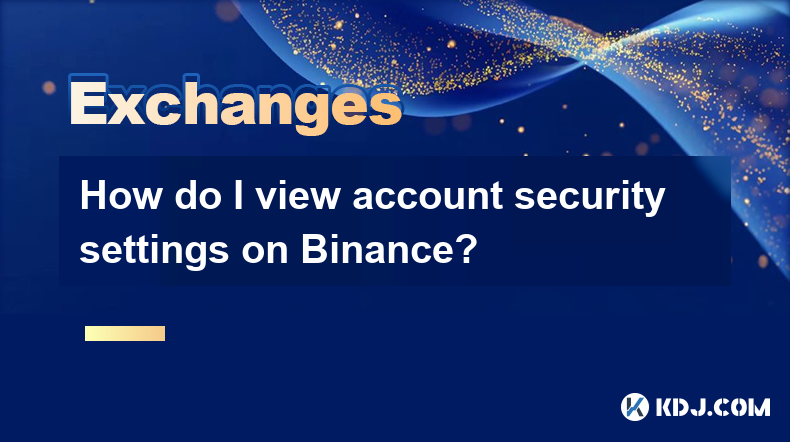
How do I view account security settings on Binance?
Mar 15,2025 at 08:40pm
Key Points:Binance's security settings are spread across multiple sections of your account. This article will guide you through each crucial area.Understanding and implementing these settings is paramount to protecting your cryptocurrency assets.We'll cover two-factor authentication (2FA), withdrawal whitelists, and other essential security features.Reg...
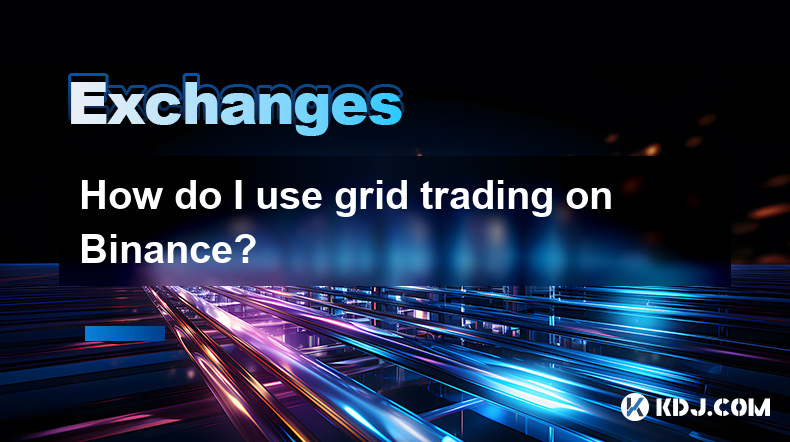
How do I use grid trading on Binance?
Mar 14,2025 at 04:25pm
Key Points:Grid trading on Binance involves automatically buying low and selling high within a defined price range.Binance offers a built-in grid trading bot, simplifying the process.Setting up a grid bot requires defining parameters like price range, grid quantity, and investment amount.Risk management is crucial, as losses are possible despite the aut...

How do I contact customer service on Binance to resolve issues?
Mar 16,2025 at 04:30am
Key Points:Binance's customer service is primarily self-service, relying heavily on its help center and FAQs.Direct contact methods are limited, with email support being the most common route for non-urgent issues.Urgent issues may require using the in-app support system, though response times can vary.Understanding Binance's support structure and utili...

How do I view the latest announcements and events on Binance?
Mar 18,2025 at 10:18pm
Key Points:Binance utilizes multiple channels for disseminating announcements and events.The official Binance website is the primary source.Binance's social media platforms offer timely updates.Email subscriptions keep users informed about relevant announcements.Third-party aggregators can supplement official channels but require caution.How Do I View t...

How do I set up a subaccount on Binance?
Mar 14,2025 at 01:50pm
Key Points:Binance does not offer traditional "subaccounts" in the sense of separate accounts with independent logins under a master account.Instead, Binance offers features like user-defined labels for better portfolio management and API keys for automated trading. These provide functionality similar to subaccounts.Setting up these features involves na...

How do I view the list of supported currencies on Binance?
Mar 15,2025 at 05:35am
Key Points:Binance supports a vast and frequently updated list of cryptocurrencies. There's no single, static list.Finding supported currencies requires navigating Binance's website or app interfaces.Different sections of the exchange show different subsets of supported currencies (e.g., trading, staking, etc.).The availability of specific cryptocurrenc...

How do I view account security settings on Binance?
Mar 15,2025 at 08:40pm
Key Points:Binance's security settings are spread across multiple sections of your account. This article will guide you through each crucial area.Understanding and implementing these settings is paramount to protecting your cryptocurrency assets.We'll cover two-factor authentication (2FA), withdrawal whitelists, and other essential security features.Reg...

How do I use grid trading on Binance?
Mar 14,2025 at 04:25pm
Key Points:Grid trading on Binance involves automatically buying low and selling high within a defined price range.Binance offers a built-in grid trading bot, simplifying the process.Setting up a grid bot requires defining parameters like price range, grid quantity, and investment amount.Risk management is crucial, as losses are possible despite the aut...
See all articles




















































































